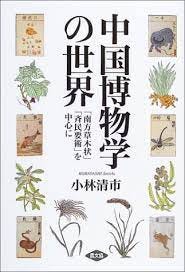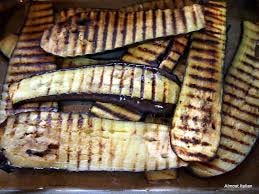Ursula K. Le Guin, distinguished award-winning author of novels, short stories, poems and essays, once declared, “I doubt that the imagination can be suppressed. If you truly eradicated it in a child, he would grow up to be an eggplant.”
Clearly, she was not a fan of the aubergine or eggplant (which is what it also used to be called in English) so readily transformed into so many seductive recipes. I, on the other hand, am passionate about everything it makes, from sticky Chinese stir fries to baba ganouj, with caponata and fried battered slices to dip into tzadziki (Greek yogurt, garlic and cucumber) in between.

While up there on the list is Parmigiana di melanzane, that unctuous layering of grilled aubergines, mozzarella, and tomato sauce, it is, like lasagna, an absolute pain to make. It takes forever, so many different processes and subsections are involved in its compilation. Most aubergine dishes can be an equal bore to put together as the aubergine must suck up oil in vast quantity before it appears to have any impact on the slices you are trying to grill or fry. But at a cooking school somewhere in China, I discovered they avoid this by quickly blanching cubes of aubergine in boiling water before proceeding with recipes. This prevents them from becoming oil sponges. Chinese recipes generally use aubergines in chunks. It would be trickier to apply this process to fragile slices.

The aubergine is an odd plant (and eggplant describes it much more eloquently), strangely beautiful. But you wonder how on earth it came to be cooked satisfactorily by the people who first came across it: its ancestors originated in northeast Africa around 2 million years ago. Slowly, it found its way to southern and western Africa and onwards to Asia. There are recipes for it from China to Russia, from Georgia to Greece, from Italy to Spain, and across India where it grows in the wild.
By definition a berry, the aubergine is related to tomatoes, chillis, and potatoes, which is interesting because the aubergine is a vegetable of the Old World while the latter three are of the New. Like them, the aubergine is derived from the deadly nightshade family, which meant that for a long time, it was considered poisonous.
‘Qimin Yaoshu’, an agricultural treatise written by Jia Sixsie, an official of the Northern Wei Dynasty in 544 AD, makes the first mention of the plant. It’s believed Arabs were responsible for its introduction the Mediterranean basin in the early Middle Ages then into Spain in the 8th century, since while it carries various Arabic and North African names - aubergine being a corruption of bāḏinjān, it doesn’t come with any ancient Greek or Roman ones. A 12th century agricultural book by Abn Al-Awwam, published in Arabic Spain, explains how to grow aubergines. Similar references begin to appear in Italy from the 14th century. It wasn’t entirely received with joy. Italians believed it could cause insanity, while in Egypt insanity was said to be more common and violent during the aubergine’s summer growing season.
It’s not until the 16th century that any reference to it is made in England. This comes in a botany book of 1597 that describes what it calls, with a reference, it seems, to the aubergine’s link to insanity, “the madde or raging Apple”:
“This plant groweth in Egypt almost everywhere... bringing foorth fruite of the bignes of a great Cucumber.... We have had the same in our London gardens, where it hath borne flowers, but the winter approching before the time of ripening, it perished: notwithstanding it came to beare fruite of the bignes of a goose egge one extraordinarie temperate yeere... but never to the full ripenesse.”
There are so many different varieties, from the tiny pea aubergines used in South East Asian coconut-milk curries to the slender white and purple ones of Japan and the pendulous plants of the Mediterranean.
When the Europeans arrived in the Americas, they brought the aubergine with them. India and China together account for 86 percent of production, in 2021 59 million tonnes of them.
I became so absorbed in making the sticky aubergine dishes of China I had almost forgotten about Italy’s equal canon of aubergine recipes. It’s years since I made a proper Parmigiana di melanzane and I missed it. But I still wasn’t going to build one. So I came up with the idea of breaking it down into rolls, which make a good starter and don’t involve the faff of the real McCoy. I forgot to take a photo, I’m sad to say, but you can get some idea of how to get set up from the picture below which demonstrates the most important step - grilling the slices with only a smear of oil. This is a method I heartily recommend for any recipe that instructs you to fry the aubergine. It reduces the amount of oil by a sizeable quantity.
Slice the aubergine into thick slices lengthways. Brush both sides with a little oil then lay them in batches on a hot dry griddle. Cover the griddle, even if it’s not possible to do it entirely, with a pan or lid to force the slices to steam a little. Grill till lines appear (lift up a corner to check) then turn and repeat. As they are completed, lay them on a sheet of aluminium foil, piled on top of one another and the foil parcel closed, to allow them to steam further.
Lay the slices on a board, spread each one with a thick helping of tomato sauce which you’ve made by shooting a generous glug of olive oil into a frying then mixing into it a can of tomatoes and stirring it in with salt to taste and a teaspoon of sugar and letting it bubble down slowly to a thick sauce. Set a thick slice of mozzarella cheese on top at one end and roll up the aubergine slice carefully then place it in a baking dish. It doesn’t matter if it tears a little - just press it together. Repeat with all the slices. pushing them up against each other in the dish so they don’t unravel. Cover with tinfoil and bake at 180C/350F for 20 minutes till the cheese has melted. Serve with some julienned basil sprinkled over.








What wonderful photos and information on the delicious aubergine- which for us non meat eaters is a great substitute. This is a glorious recipe and I shall try it tonight!